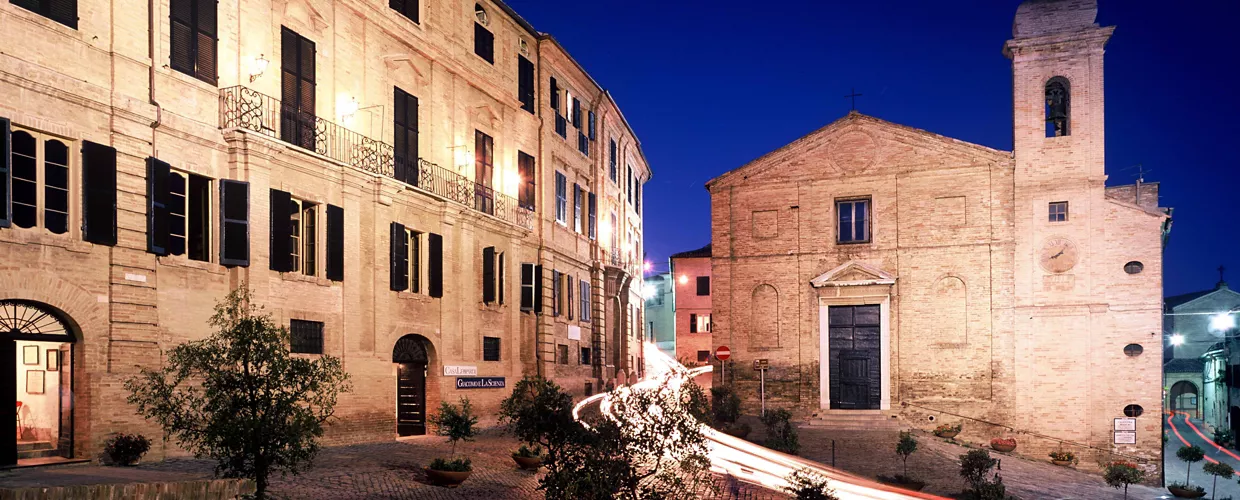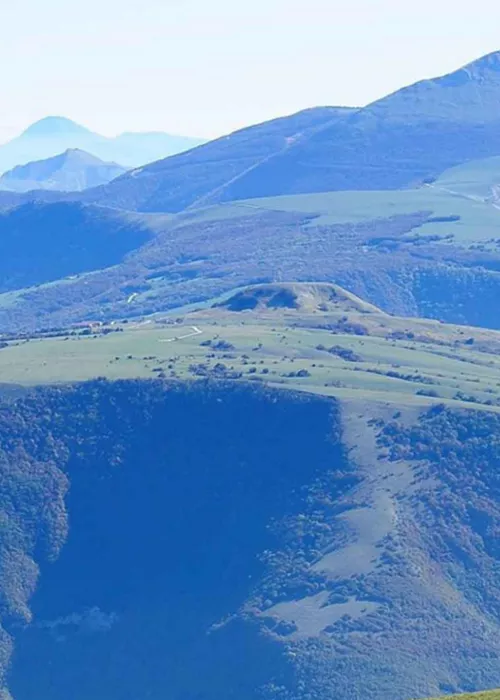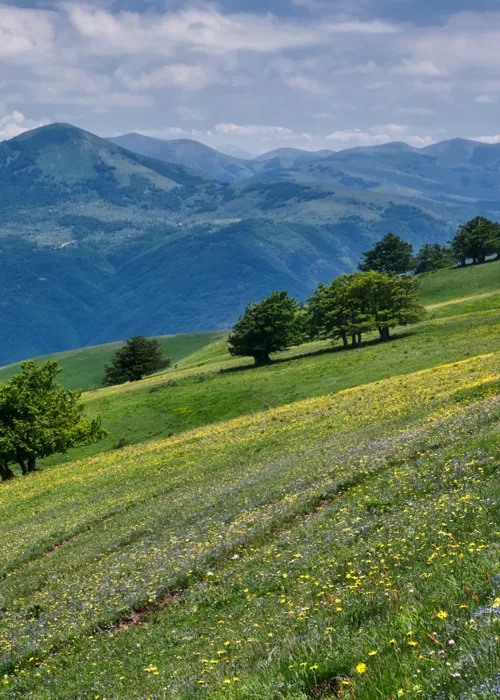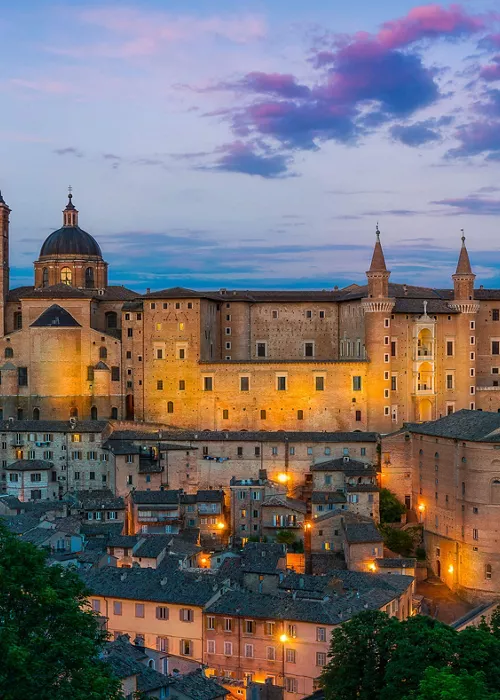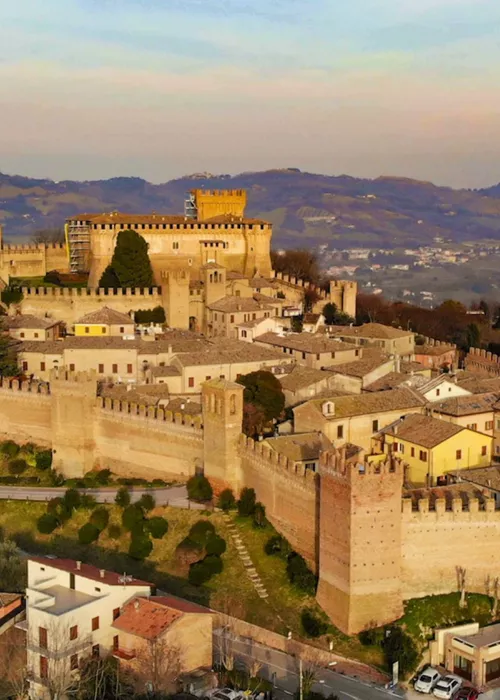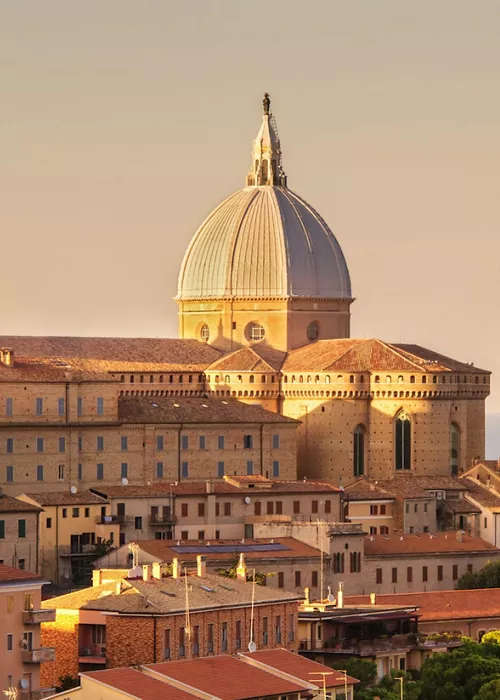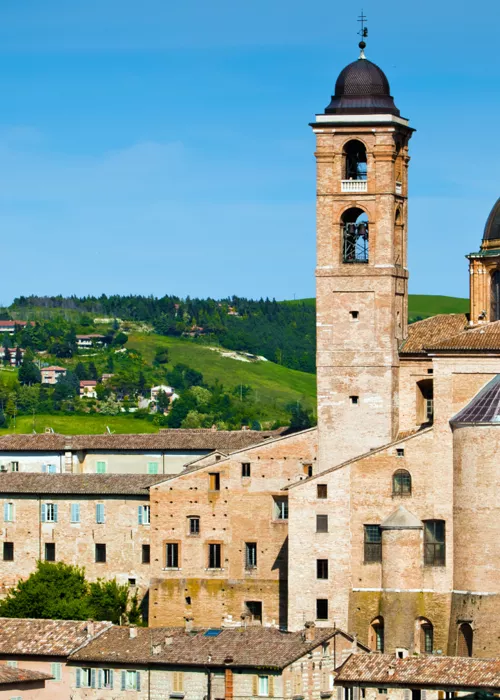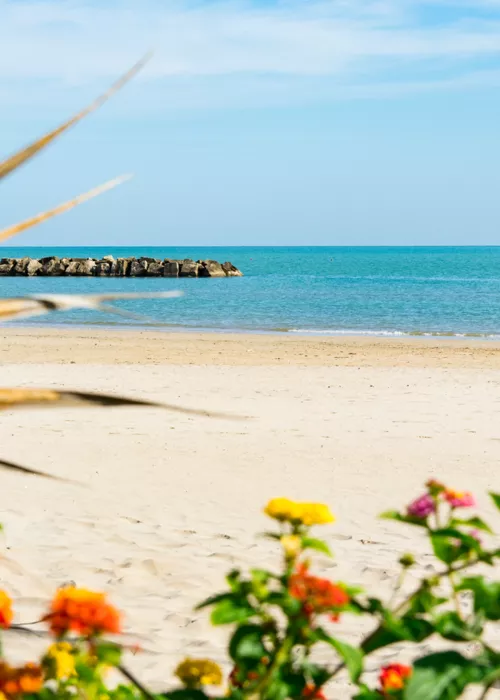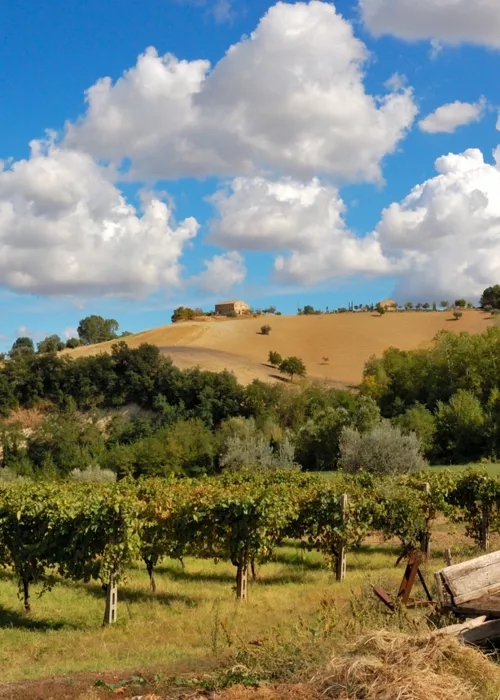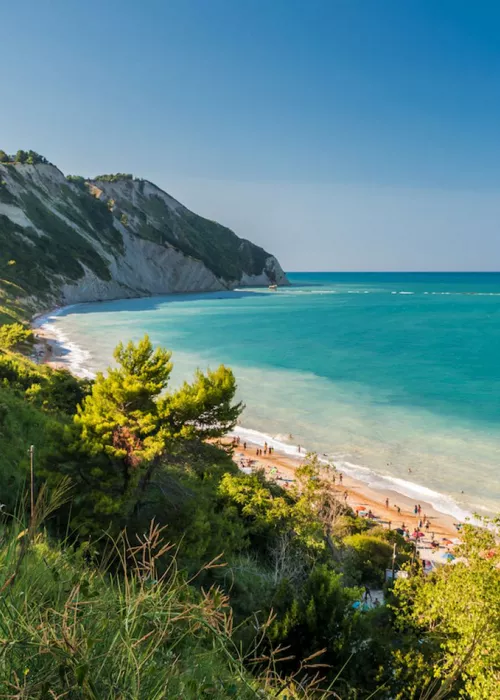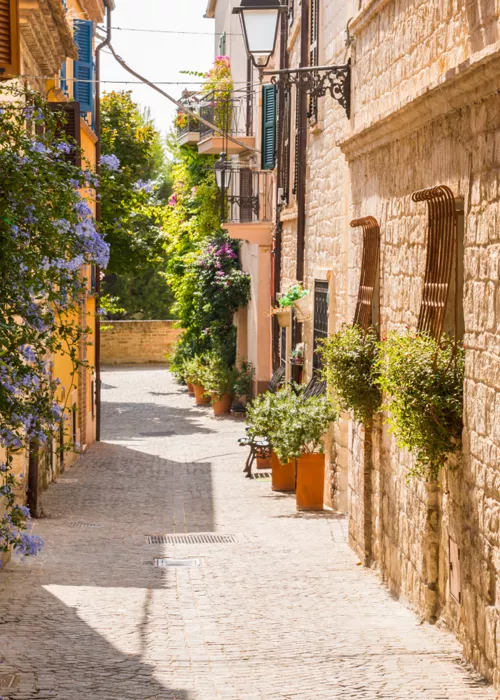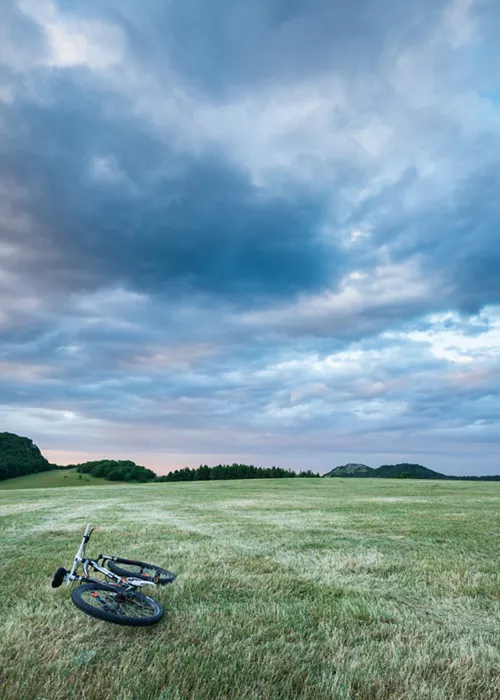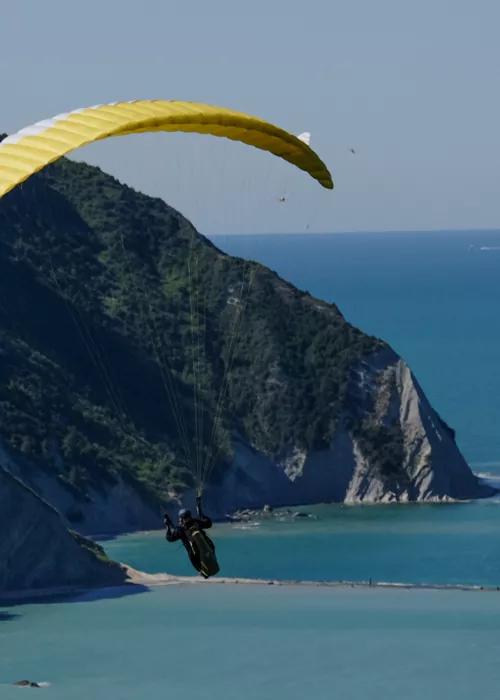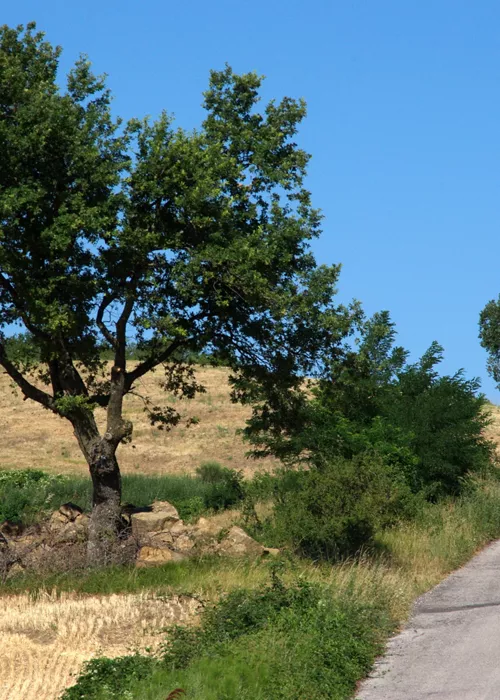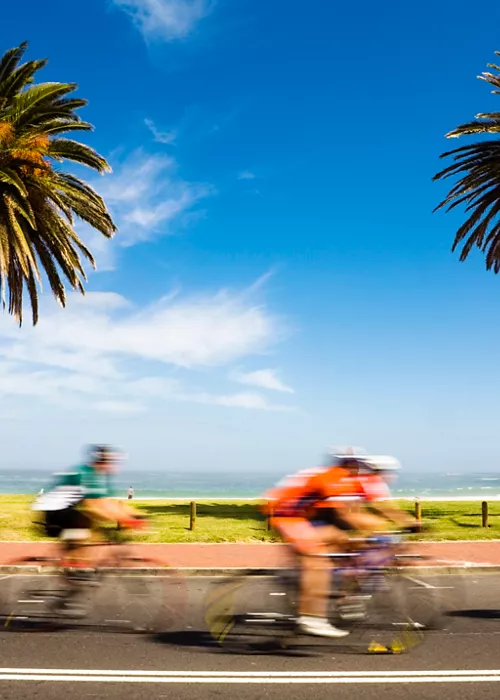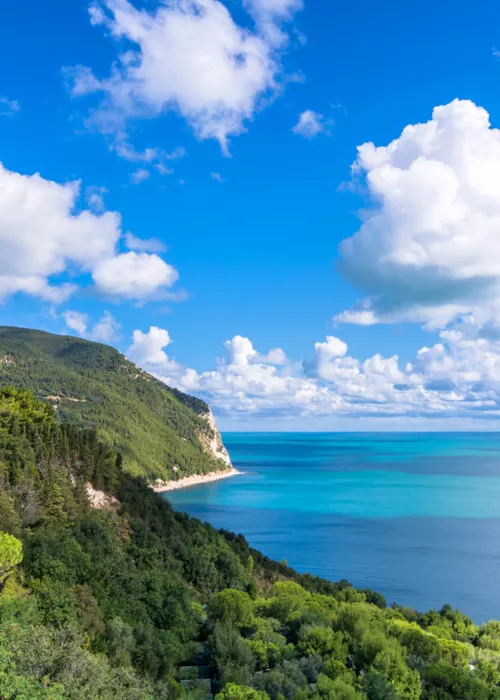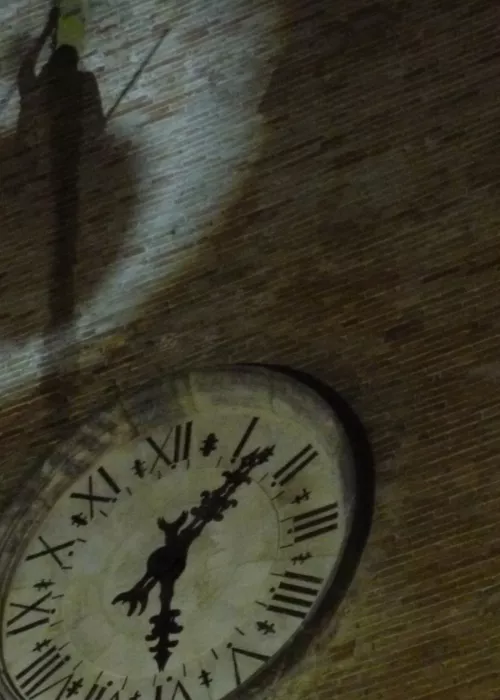Recanati: the Infinite City
Recanati is the birthplace of the greatest Italian poet of the 19th century, Giacomo Leopardi.
Here, everything refers to him and his poetic inspiration: the palace where he was born that preserves his “sweaty papers”, Silvia's house, the hill of L'Infinito.
The splendid views of the countryside, the elegance of the village, and the remarkable works of art that are housed there make Recanati an essential stop on any trip to the Marche region. A stone's throw from the sea of Porto Recanati and the Conero Riviera.
In the village of the poet Giacomo Leopardi
The “native wild village” of Leopardi (1798-1837) will enchant you with its favourable position on a very scenic hill, but also with its beautiful palaces and the beautiful walkway along the walls, on which you can stroll and enjoy the view of the sea.
A visit to Leopardi's birthplace, a palace still inhabited by his descendants, is very interesting: you can see the rooms where he grew up, the elegant library with rare volumes of his “mad and desperate study”, his room overlooking the more modest home of Silvia, the young daughter of his coachman with whom he was enamoured.
In the village there is the place that inspired the poet with his best-known poem, L’Infinito: it is the kitchen garden of the monastery of Santo Stefano, on top of a hill a few steps from Leopardi's house, reopened to the public in 2019 thanks to the FAI. You will also find the square from Il sabato del villaggio and the tower from Il passero solitario, of St Augustine.
Leopardi is credited with the presence in Recanati of the World Poetry Centre, housed in the convent of Santo Stefano, and the Centro Studi Leopardiani created in 1937 to stimulate research and reflection on the poet's work, which is celebrated on 21 March, World Poetry Day, and in June with a festival dedicated to him.
Also worth seeing in Recanati are the Cathedral of San Flaviano, the civic museum of Villa Colloredo Mels, an art gallery exhibiting four important works by Lorenzo Lotto, and the Museum of Emigration from the Marche, which documents, with stories and testimonies, the diaspora of the 700,000 who left the region in search of fortune.
Another illustrious citizen of Recanati was Beniamino Gigli, one of the most acclaimed opera tenors of the 20th century. In the Persiani Theatre, inside the Sala dei Trenta, at the level of the third tier of boxes, his dressing room has been reconstructed in his memory, and the Beniamino Gigli Museum houses stage costumes.
Porto Recanati
As cosy is the atmosphere in Recanati, as lively and cheerful is that of Porto Recanati on the coast.
During the day, wide beaches of fine gravel, mostly with facilities, offer all kinds of services: there is one close to the village and a more secluded one, the Pineta, which borders on the green.
In the evening, Porto Recanati comes alive in the area around the Svevo castle (actually 15th century), which hosts concerts and evening shows in its courtyard named after Beniamino Gigli.
The castle tower can be climbed to see the panorama of the coast. Its rooms house a picture gallery with an important collection of 17th-century paintings (from Luca Giordano to Rosso Fiorentino) and a nucleus of Macchiaioli painters (from Giovanni Fattori to Silvestro Lega). Also on display are archaeological finds from the excavations of the old Potentia, the Roman colony founded in 184 BC in the hamlet of Santa Maria, where the remains of a Roman domus with a mosaic floor and frescoed walls are visible.



